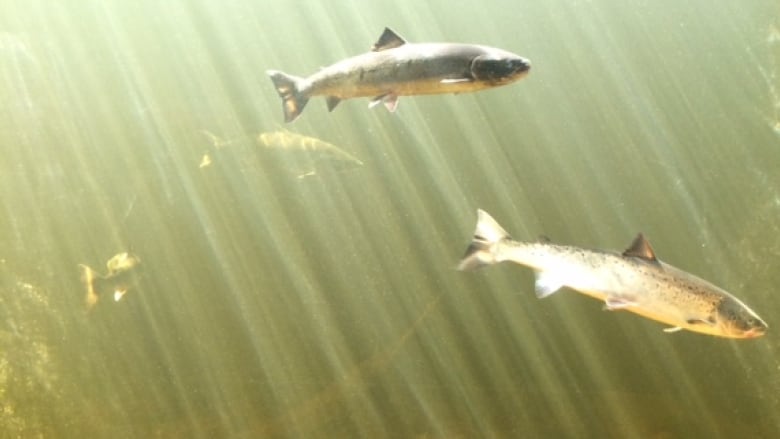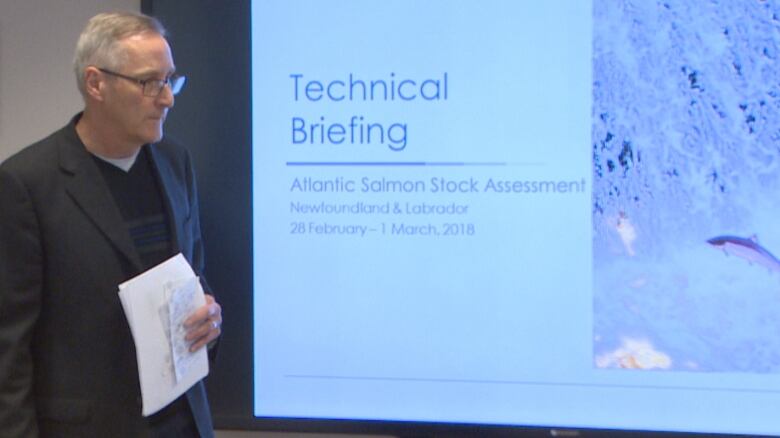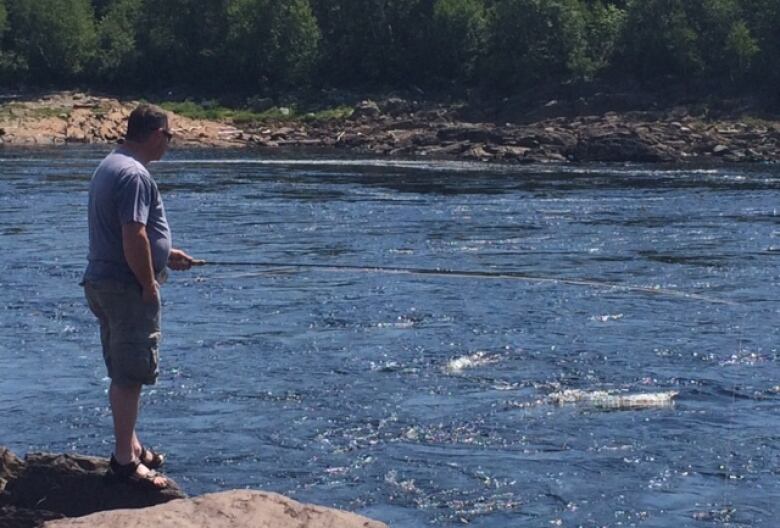Federal scientists 'deeply concerned' about salmon stocks
'We've never seen anything like this,' says research scientist about 2017 numbers

Scientists at the federal Department of Fisheries and Oceans(DFO) are sounding the alarm about the state of salmon stocks in Newfoundland and Labrador rivers.
The2017 stock assessment, released Monday, show the salmon population at an all-time low.
"As scientists, we are deeply concerned," said Geoff Veinott. "We've never seen anything like this. 2016 was a low year, we sort of thought maybe that was it, that was the bottom, then 2017 turned around and it was worse."
Last year, DFO monitored 19 salmon rivers in the province. It found that 80 per cent of the rivers showed a decline of more than 30 per cent compared to average populations of the previous five or six years.
Mortality at sea is where we are losing our fish.- GeoffVeinott, DFOscientist
Veinott said scientists haven't seen this level of decline since a commercial salmon moratorium in 1992.
"Declines of this magnitude are highly unusual especially over such a wide geographic range, and again, this is the second year in a row this has happened."

The cause of the dramatic decline is unknown, but Veinott said only five out of every 100 juvenile salmon, or smolt, return to the rivers after migrating to the ocean.
"That's where the loss is taking place, the juveniles going out are not returning. So mortality at sea is where we are losing our fish."
Veinott said scientists haven't found a "smoking gun" in the environmental data, but heavy ice, like what was seen off the coast of the province last year, can play a role in salmon populations.
"When we have heavy ice, we tend to get later returns of salmon. They are delayed coming into the rivers, and late returns are generally poor returns.
In general, when salmon are late, that's usually not a good sign."
Implications for anglers
In August 2017, concern about low salmon numbers prompted DFO to impose a catch-and-release policy for anglers.

Veinott said it's the job of scientists to assess the stocks, not to make recommendations about how the fishery is managed. But he analyzed different management scenarios and how each one could affect the stock.
He estimated a catch-and-release only system would lead to an 80 per cent reduction in overall mortality. Allowing anglers to keep one fish could reduce the harvest by 50-60 per cent, depending on how many licences are sold, while a two-fish limit would mean a continuing decline in stocks.
It's clear something has to give.
"We keep hitting lower and lower bottoms. So we may see a recovery in 2018, but the long-term outlook seems to be in a declining direction," Veinott said.
A management plan for the 2018 salmon fishery is expected in May.












_(720p).jpg)


 OFFICIAL HD MUSIC VIDEO.jpg)
.jpg)



























































































